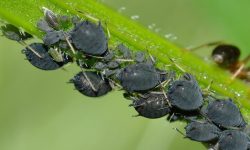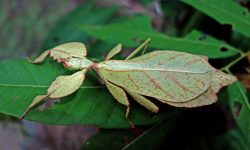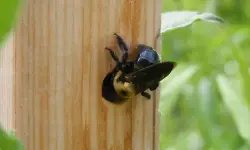Cockroaches are among the most resilient and adaptable insects found across the globe, and California is no exception. The diverse climate and habitats throughout the state support a wide variety of these hardy pests. Understanding the different types of cockroaches in California can help residents identify and manage infestations more effectively.
In this guide, we’ll explore 20 common types of cockroaches in California, showcasing their unique features and behaviors. From the notorious American cockroach to lesser-known species, each type has distinct characteristics that make them stand out. Identifying the exact type is crucial for choosing the right control methods.
Different Types of Cockroaches in California
American Cockroach (Periplaneta americana)
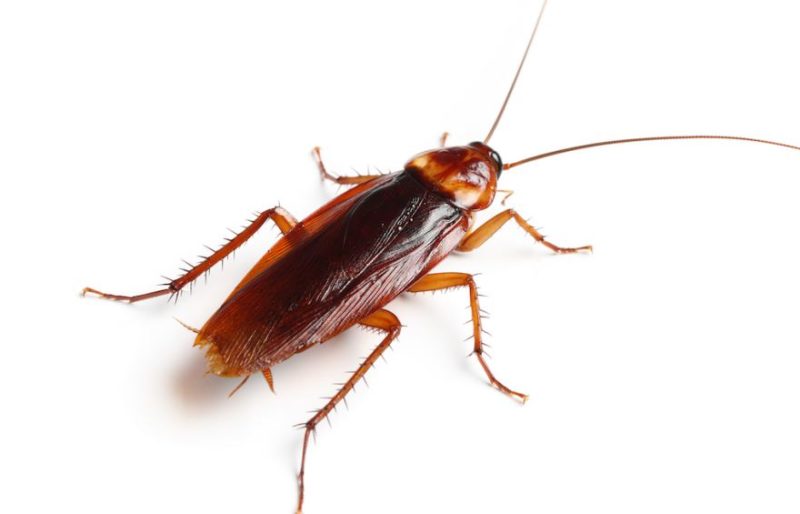
The American cockroach is one of the largest cockroach species found in California, measuring about 1.5 to 2 inches in length. It has a reddish-brown body with a distinct yellowish figure-8 pattern behind the head. Both males and females have fully developed wings, and they are capable of gliding short distances, especially in warm temperatures.
This species prefers warm, damp environments and is frequently found in basements, crawl spaces, sewer systems, and around drains. In California’s urban areas, they are often seen emerging from manholes and storm drains, particularly during hot or wet weather. They are nocturnal and scurry quickly when exposed to light.
American cockroaches reproduce by laying egg cases called oothecae, each containing up to 16 eggs. Females deposit these cases near food and water sources. Their ability to survive in harsh conditions and wide-ranging diet—feeding on anything from crumbs to decaying matter—makes them persistent pests that require baiting and exclusion methods to control effectively.
German Cockroach (Blattella germanica)
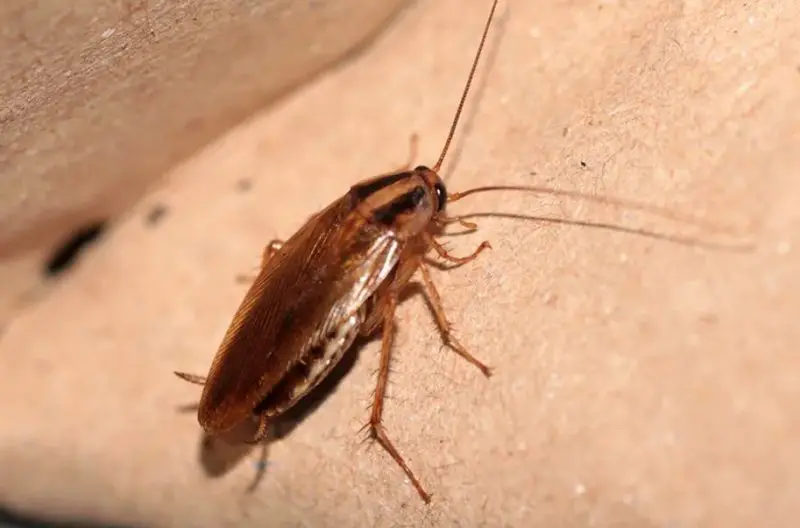
The German cockroach is small, measuring about ½ to ⅝ inch long, and is easily recognized by two dark parallel stripes running lengthwise from the head down the thorax. It has a light brown or tan body and wings that are not used for flying. Due to its size and agility, it can easily hide in tight spaces and spread rapidly.
German cockroaches are highly adapted to indoor environments and thrive in the kitchens, bathrooms, and break rooms of California homes and commercial buildings. They are especially common in apartment complexes and restaurants, where warmth, moisture, and food are abundant. They are nocturnal and often stay hidden during the day.
This species reproduces at an alarming rate, with females carrying oothecae containing up to 40 eggs until just before they hatch. Infestations can grow rapidly if not addressed promptly. Because they tend to cluster in small areas, bait gels and insect growth regulators are commonly used for control, along with strict sanitation practices.
Brown-banded Cockroach (Supella longipalpa)
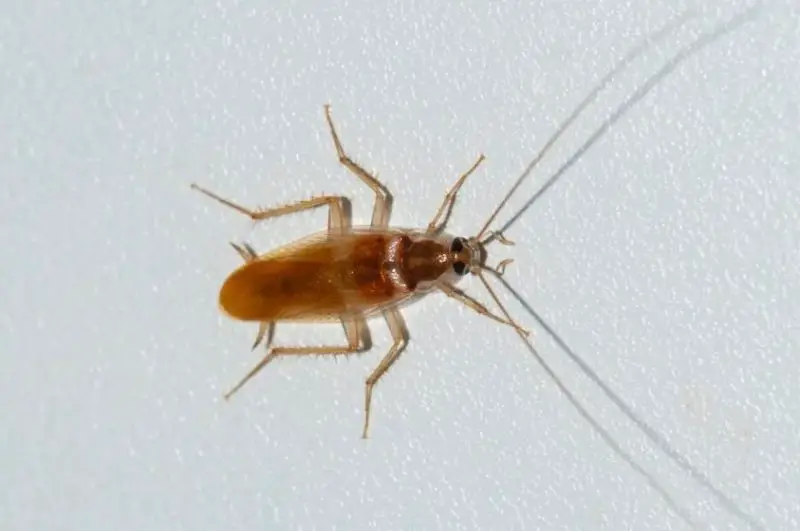
Brown-banded cockroaches are about ½ inch in size and are distinguished by two pale bands running across their dark brown or reddish-brown bodies. Males have fully developed wings and can fly, while females have shorter wings and usually do not. Their preference for higher, warmer locations separates them from other indoor species.
In California, brown-banded cockroaches are often found in the upper parts of cabinets, behind wall hangings, inside light fixtures, and within electronics. Unlike other cockroaches, they avoid moisture and instead choose drier places throughout homes and offices. They are more frequently found in bedrooms and living rooms than kitchens or bathrooms.
This species lays oothecae containing around 16 eggs, which females attach to hidden surfaces like furniture or ceilings. Brown-banded cockroaches are opportunistic feeders and will consume glue, paper, and even fabric. Since they scatter throughout buildings, thorough inspections and baiting in elevated or unusual locations are necessary for effective management.
Oriental Cockroach (Blatta orientalis)
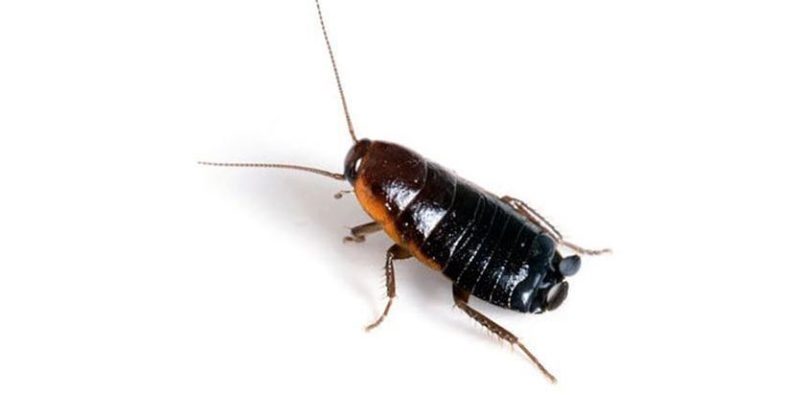
The Oriental cockroach is a large, dark species measuring up to 1 inch in length. It has a glossy black or dark brown body, with males having wings that cover most of their bodies and females possessing short, vestigial wings. Despite their wings, neither sex is capable of flight. They are often referred to as “water bugs” due to their preference for damp environments.
This species is commonly found outdoors in California under mulch, leaf litter, and debris. Indoors, they inhabit cool, moist areas such as crawl spaces, basements, and utility rooms. They are more sluggish than other cockroach species and often travel along baseboards and pipes. Their presence is usually accompanied by a strong, musty odor.
Oriental cockroaches reproduce by depositing oothecae with up to 16 eggs in protected, moist areas. Because they require a humid environment, they are less common in dry interior spaces unless water is readily available. Control methods focus on reducing moisture, sealing entry points, and using perimeter sprays and baits in known harborages.
Smoky Brown Cockroach (Periplaneta fuliginosa)

Smoky brown cockroaches are medium to large insects, measuring about 1.25 inches long. They are uniformly dark mahogany or chocolate brown in color and have a smooth, shiny appearance. Both males and females have long wings that extend past the abdomen and are strong flyers, especially during warm evenings.
This species prefers outdoor environments with high humidity and is commonly found in Southern California. They are often seen in tree holes, roof gutters, woodpiles, attics, and sheds. Though primarily outdoor roaches, they may enter homes through vents, chimneys, or gaps in siding, particularly in search of food or water.
Smoky brown cockroaches produce oothecae containing about 24 eggs, which are typically deposited in hidden, sheltered areas. They are highly attracted to lights at night and can be drawn to porches or indoor lights if windows are left open. Effective control involves sealing gaps, removing leaf litter, trimming tree branches, and applying outdoor bait and residual sprays near likely entry points.
Turkestan Cockroach (Blatta lateralis)
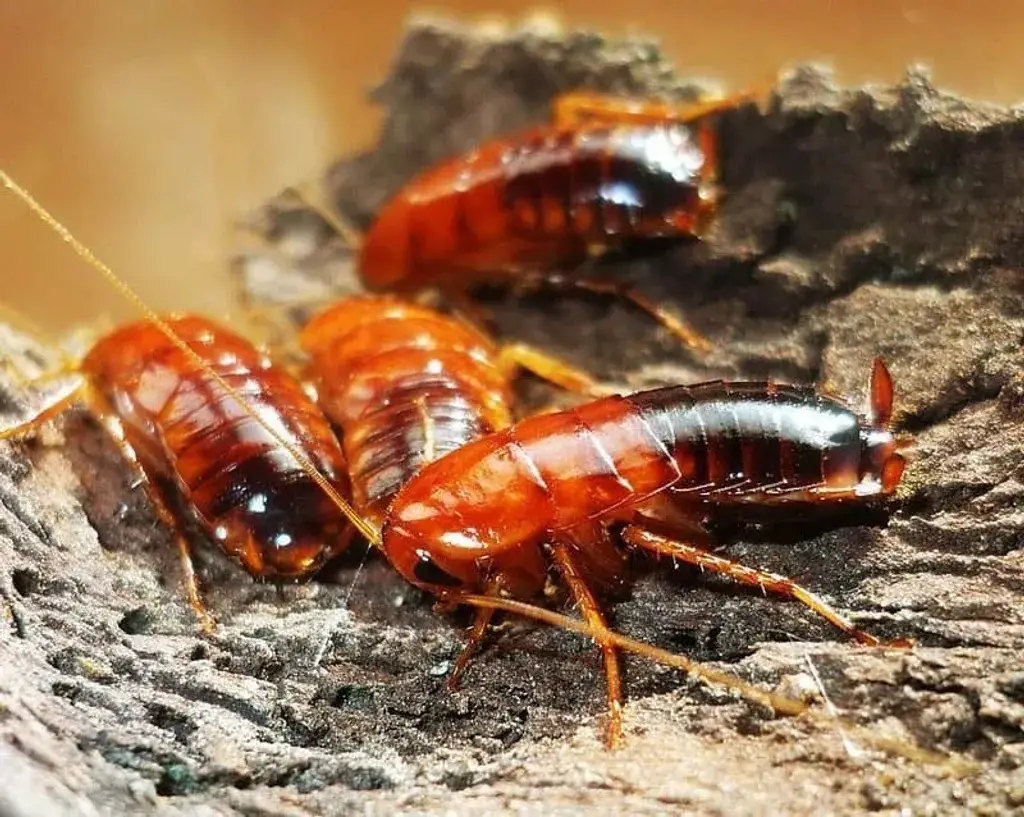
The Turkestan cockroach is a medium-sized species, measuring around 0.75 to 1 inch in length. Males are reddish-brown with pale yellow wings that extend beyond the abdomen, making them capable fliers. Females are darker, nearly black, with short, stubby wings and a broader body. Their contrasting appearance makes it easy to distinguish between sexes.
In California, Turkestan cockroaches are common in arid and semi-arid environments, especially around military bases, ornamental landscaping, and cracks in concrete. They favor outdoor harborage areas like compost piles, water meter boxes, and crevices in masonry. They are most active at night and attracted to lights, often entering homes from patios and garages.
Turkestan cockroaches reproduce quickly, with females depositing oothecae that contain up to 18 eggs. These egg cases are often hidden in sheltered outdoor spots. Their fast development and tendency to replace Oriental cockroaches in urban areas make them a growing concern. Effective control includes sealing entry points, reducing outdoor clutter, and applying perimeter insecticides or roach baits.
Australian Cockroach (Periplaneta australasiae)
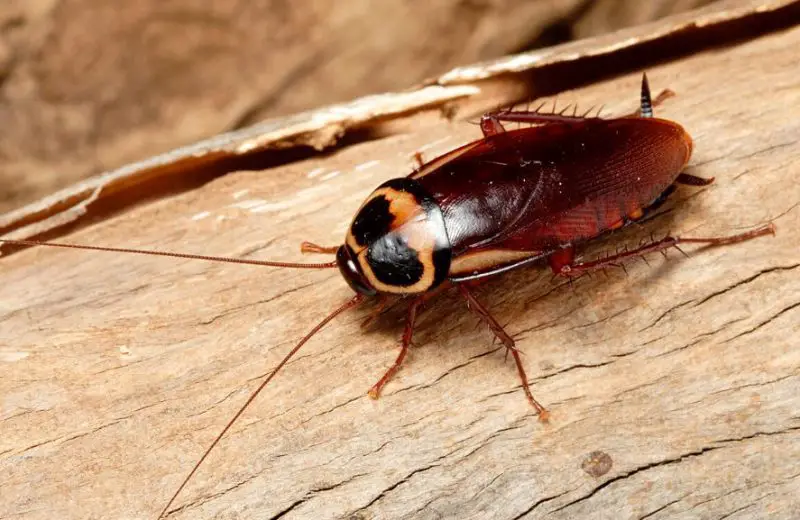
The Australian cockroach resembles the American cockroach but is slightly smaller, measuring about 1.25 inches in length. It can be identified by the prominent yellow markings along the outer edge of its thorax and the front part of its wings. Like its American cousin, it has long wings and is a capable flier.
In California, this species prefers warm, moist conditions and is usually found outdoors in mulch, leaf litter, greenhouses, and gardens. They may enter homes through windows or vents in search of food or moisture, especially during hot or dry weather. Once inside, they tend to congregate in kitchens, bathrooms, or laundry areas.
Australian cockroaches reproduce by laying egg cases with up to 24 eggs, which are deposited in secluded, moist places. They feed on organic debris, plant material, and starchy food items indoors. Controlling them involves reducing outdoor harborage, fixing water leaks, and using residual insecticides near entryways and favored nesting sites.
Surinam Cockroach (Pycnoscelus surinamensis)

The Surinam cockroach is a small to medium-sized burrowing species, typically around 0.75 inches long. It has a dark brown to black body with light brown wings that completely cover the abdomen. Unlike many other roaches, only females are common in the wild due to their parthenogenetic reproduction—males are extremely rare.
In California, Surinam cockroaches are primarily found outdoors in warm, humid areas such as greenhouses, gardens, compost piles, and flower beds. They are especially associated with tropical plants and soil. This species prefers to burrow and is rarely seen indoors unless potted plants are brought inside.
Surinam cockroaches give birth to live young rather than laying egg cases. The female carries the developing nymphs internally until they hatch, producing broods of 20 to 40 at a time. Because they burrow and avoid light, control involves treating the soil of infested plants, using granular baits, and avoiding transport of contaminated potted plants.
Brown Cockroach (Periplaneta brunnea)
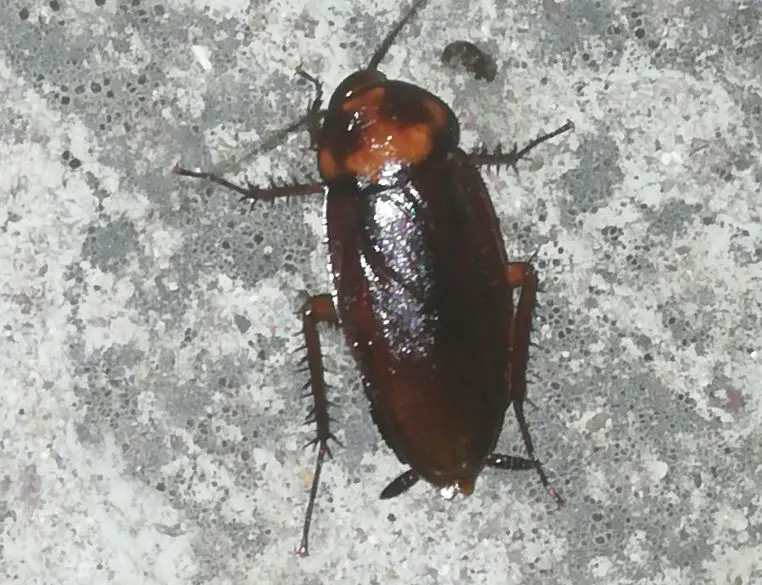
The Brown cockroach is a large species that closely resembles the American cockroach, reaching about 1.5 inches in length. It has a shiny reddish-brown body but lacks the yellowish figure-eight pattern seen on the American species. Its wings are long, and it can glide but is less commonly observed flying.
In California, brown cockroaches are mostly found in warm, moist outdoor environments like leaf litter, woodpiles, and hollow trees. They may occasionally enter buildings through wall voids, utility lines, or attic vents but are not as frequently seen indoors. Their activity peaks during warm seasons, especially after rain.
These cockroaches lay oothecae containing around 24 eggs, hidden in moist crevices. Because they often live in similar environments to American cockroaches, they can be misidentified. Control focuses on reducing moisture, removing yard debris, and applying targeted baits and residual insecticides near suspected harborages.
Western Wood Cockroach (Parcoblatta americana)
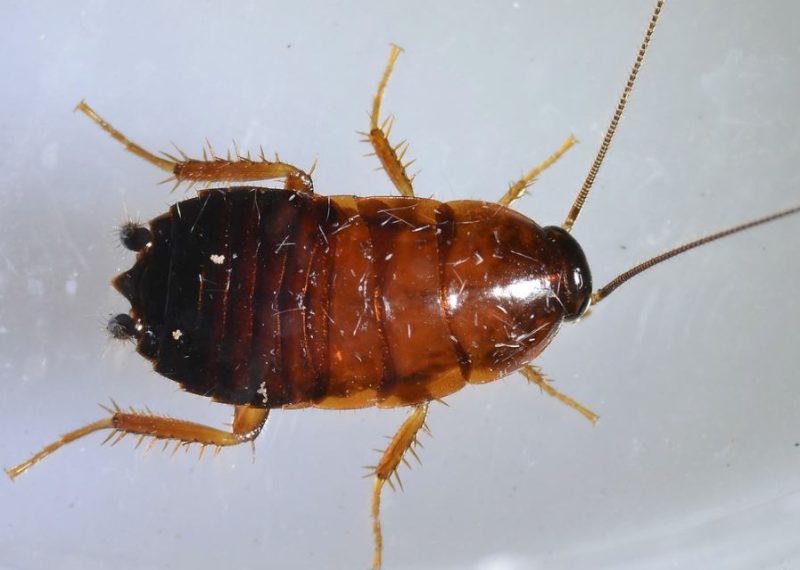
The Western Wood cockroach is a native species found primarily in forested or wooded regions of California. Males are about 1 inch long with fully developed wings and capable of flight, while females are shorter and wingless. Their coloration is light brown to tan, blending well with bark and leaf litter.
This species thrives in outdoor environments, particularly in forests, under loose bark, logs, or mulch. They rarely infest homes but may occasionally enter cabins or rural structures near their natural habitats, especially during warm nights when drawn to lights. Indoors, they do not survive long and typically do not breed.
Western Wood cockroaches reproduce by laying small egg cases in leaf litter or under bark. They are not considered serious pests but can be a nuisance when attracted to outdoor lights or when brought indoors with firewood. Prevention includes keeping woodpiles away from buildings and sealing gaps around doors and windows.
Three-lined Cockroach (Luridiblatta trivittata)
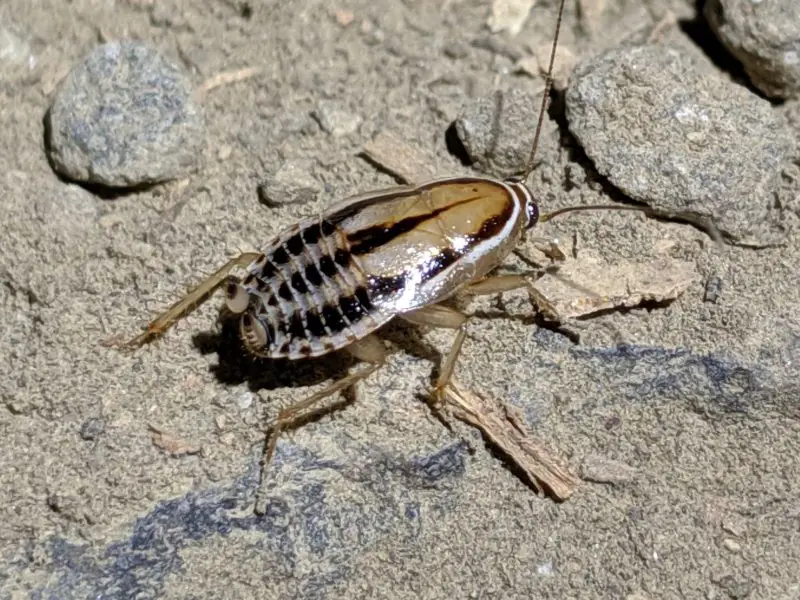
The Three-lined Cockroach is a small, slender species reaching about 0.5 inches in length. Its most distinctive feature is the presence of three dark longitudinal stripes running along its pale tan or yellowish body. It has a soft, flattened appearance and is more delicate than common household cockroaches.
In California, this species is mostly found outdoors in dry, warm areas with leaf litter or decaying plant material. It prefers undisturbed environments like forest floors, grassy fields, or landscaped areas with mulch. Though not a typical indoor pest, it may occasionally be seen in basements or near entryways when disturbed.
The Three-lined Cockroach is not considered a serious threat and does not reproduce indoors. It feeds on decaying organic matter and plays a minor role in natural decomposition. Control measures are rarely necessary, but reducing excess mulch, leaf litter, and sealing cracks around homes can help prevent occasional entry.
Desert Cockroach (Arenivaga investigata)
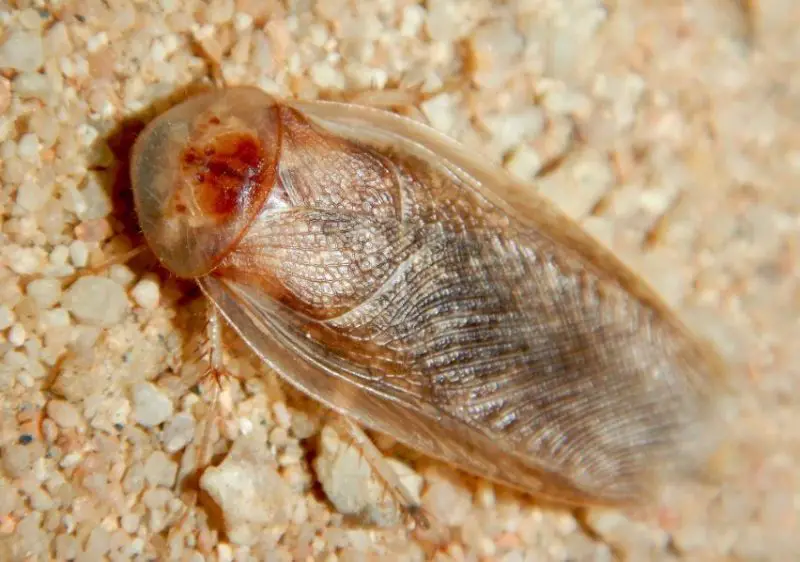
The Desert Cockroach is a robust, burrowing species adapted to dry, arid environments. It has a dusty brown to grayish body with short wings and a rounded shape. Measuring around 0.75 to 1 inch in length, its body is covered in fine hairs that help retain moisture and filter sand.
In California, the Desert Cockroach is most commonly found in desert and scrubland habitats, particularly in southern parts of the state. It prefers sandy soil where it digs shallow burrows to escape extreme heat and dryness. This species is nocturnal and emerges at night to search for organic debris or algae.
Desert Cockroaches are not household pests and are rarely encountered inside buildings. They reproduce slowly, with females laying egg cases underground. Since they are beneficial to desert ecosystems and pose no threat to humans, control is unnecessary unless found in greenhouses or sensitive landscaped areas.
Boll’s Sandroach (Arenivaga bolliana)
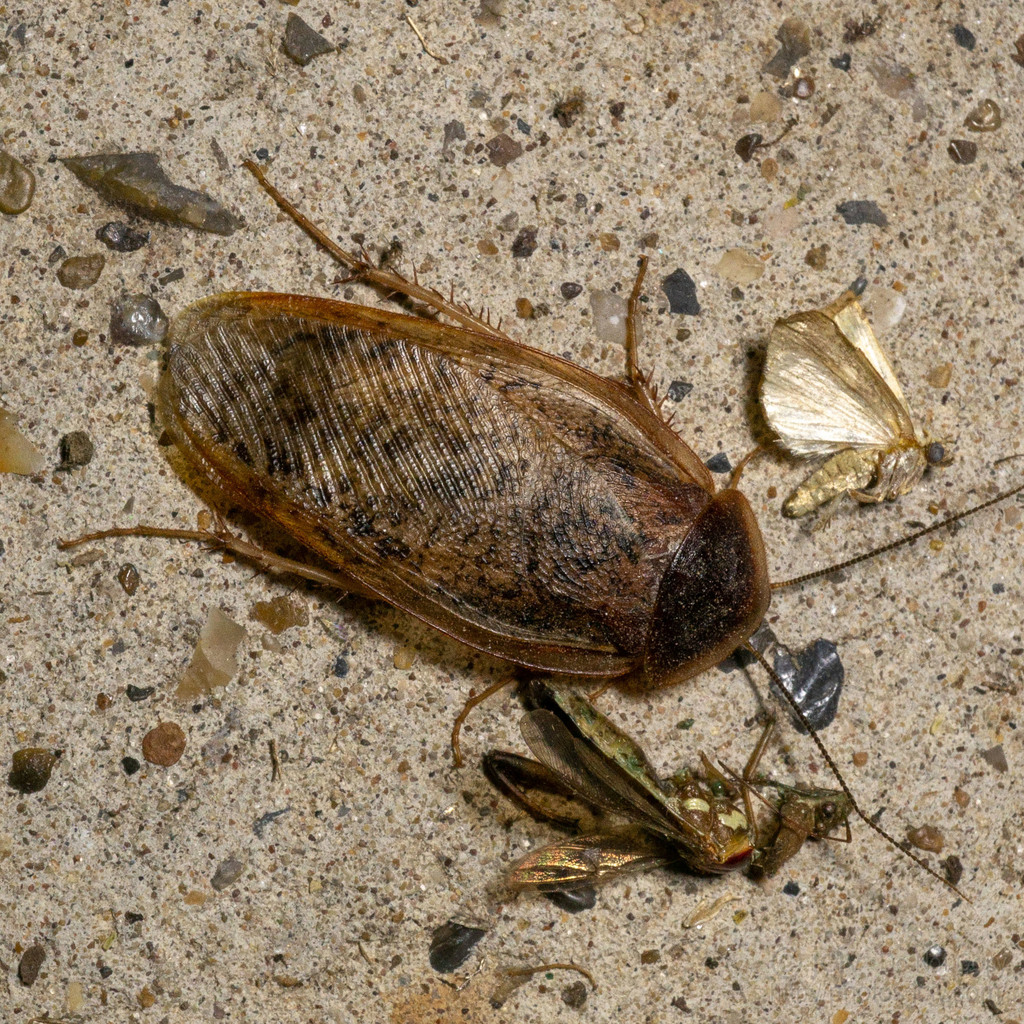
Boll’s Sandroach is a desert-dwelling species native to the southwestern U.S., including California. Adults are tan to light brown with a rounded body and fine hairs that help trap moisture. They typically grow to around 0.75 inches long and have a soft, velvety texture with reduced or absent wings in females.
In California, Boll’s Sandroach inhabits sandy or loose soils in desert habitats. They spend most of their lives underground, emerging only at night when humidity is higher. These cockroaches are especially adapted to extreme drought conditions and are rarely found in residential areas or structures.
Their behavior is secretive and non-invasive. Reproduction occurs through oothecae that are buried in moist soil. Boll’s Sandroach contributes to nutrient cycling in desert soils. Control is generally not required due to their harmless nature, though greenhouse or nursery infestations can be treated with soil-safe insecticides.
Eremoblatta subdiaphana

Eremoblatta subdiaphana is a translucent, pale-colored cockroach with a delicate body structure. Adults are usually under 1 inch in length and have wings, though they are weak fliers. Their coloration blends well with desert sand and soil, providing camouflage from predators.
In California, this species is native to desert regions and thrives in hot, dry climates. They prefer sandy soils with sparse vegetation and are often found near creosote bushes or under rocks and debris. As nocturnal foragers, they feed on decomposing organic material, fungi, and plant detritus.
They are not known to infest homes or buildings and have no pest significance. Like other desert cockroaches, Eremoblatta subdiaphana reproduces by laying eggs in underground chambers. Control is rarely needed and can be achieved with basic outdoor sanitation if necessary.
Arenivaga nalepae

Arenivaga nalepae is another member of the sand cockroach group, found in arid regions of California. This species is small to medium in size, generally ranging from 0.6 to 0.9 inches in length. It has a rounded, dusty brown body with sparse hair and typically lacks fully developed wings.
In California, Arenivaga nalepae inhabits desert scrub environments, preferring sandy or loose soils where it can burrow easily. These cockroaches are secretive and nocturnal, coming to the surface only during cooler nighttime hours. They are most often seen after rainfall or increased humidity.
This species is not a household pest and contributes to soil health by breaking down organic matter. Control is usually unnecessary due to their harmless and non-invasive behavior. In rare cases, infestations in greenhouses or plant nurseries can be addressed using soil insecticides or environmental modifications.
Arenivaga tonkawa

Arenivaga tonkawa is a rare, sand-dwelling cockroach species known for its pale brown to tan body and slightly flattened, rounded shape. Adults typically measure around 0.7 to 1 inch in length. Females are wingless or have reduced wings, while males have functional wings and can fly short distances.
This species is native to arid and semi-arid regions of California, especially in areas with sandy soils such as desert washes and dry shrublands. It prefers environments with loose soil where it can burrow during the day to escape heat and dehydration. Arenivaga tonkawa is nocturnal and feeds on decomposing organic matter found in the upper soil layers.
Because it rarely comes into contact with humans and does not infest buildings, Arenivaga tonkawa is not considered a pest. It plays a beneficial role in nutrient recycling in desert ecosystems. Control is typically not necessary, but if encountered in plant nurseries or greenhouses, soil sanitation and moisture regulation may help prevent population growth.
Arenivaga sequoia
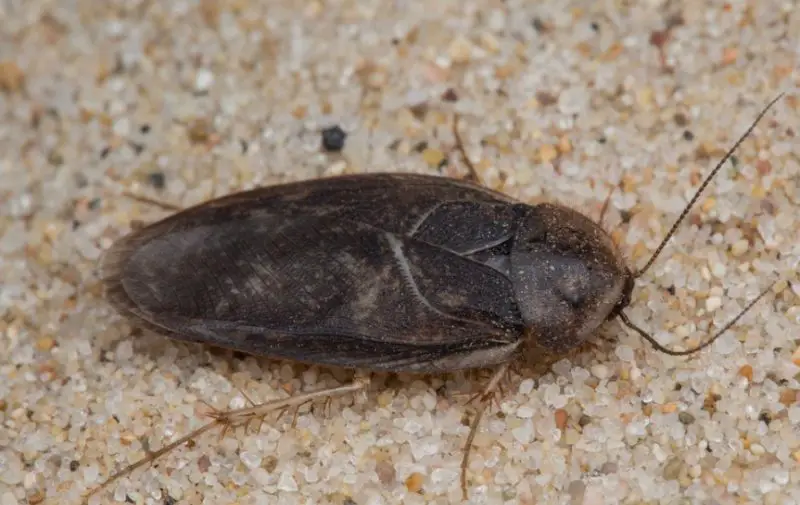
Arenivaga sequoia is a native Californian cockroach found primarily in forested or mountainous regions, particularly around the Sierra Nevada. It has a pale brown to reddish-tan body with a velvety texture, typically measuring between 0.6 and 0.9 inches in length. Like other Arenivaga species, the males are winged, and the females are wingless.
Unlike its desert relatives, Arenivaga sequoia is adapted to cooler and more humid environments. It lives under leaf litter, fallen logs, and forest debris in high-altitude forests. Despite its presence in the wild, it is very rarely seen due to its secretive and burrowing behavior.
This species is not considered a pest and does not enter homes or buildings. It contributes to the breakdown of forest detritus and helps maintain healthy forest soil. Since it poses no threat to human health or structures, no control measures are typically needed or recommended.
Field Cockroach (Blattella vaga)
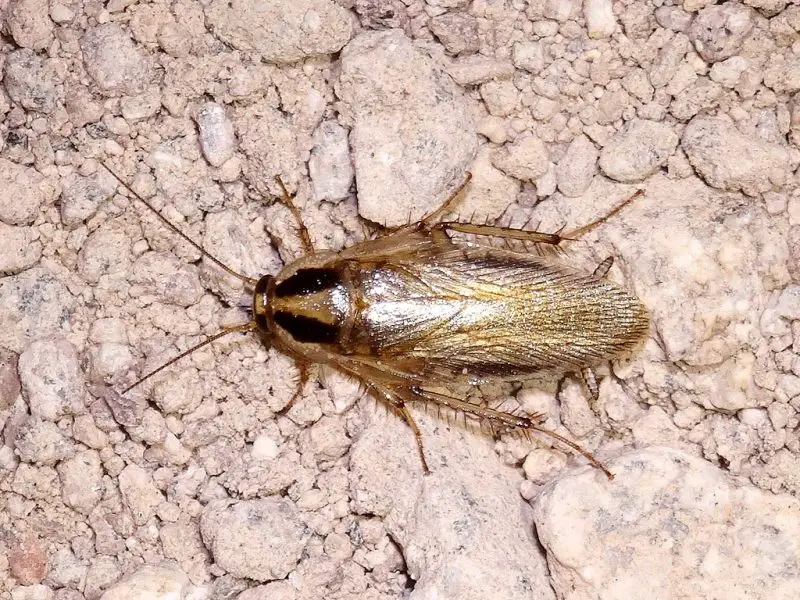
The Field Cockroach is a small, light brown species that closely resembles the German cockroach in shape and size but has distinguishing features like a dark stripe between the eyes. Adults are about 0.4 to 0.5 inches long and have fully developed wings. It is fast-moving and quick to escape when disturbed.
In California, Field Cockroaches are usually found outdoors in gardens, fields, and landscapes, especially where there is organic debris or moist mulch. They thrive in warm, dry conditions and can often be found on window sills or entering buildings through open doors and windows, though they do not breed indoors.
Blattella vaga is not considered a true household pest since it does not infest homes or contaminate food. Control is usually not necessary unless populations build up near entry points. In such cases, sealing gaps, reducing outdoor lighting, and keeping landscaping tidy can help minimize encounters.
Parcoblatta caudelli (Caudell’s Wood Cockroach)
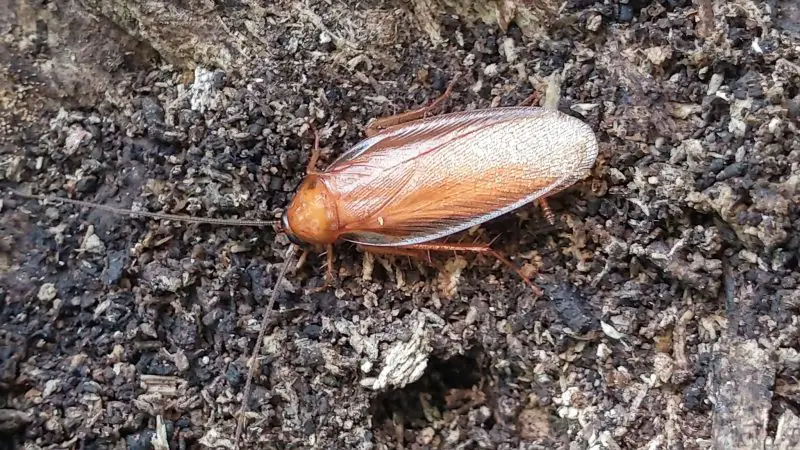
Caudell’s Wood Cockroach is a forest-dwelling species with a shiny reddish-brown to dark brown coloration and a slender body. Males are about 0.6 to 0.8 inches long and have long wings, while females are slightly smaller with shorter or rudimentary wings. This species has a relatively smooth appearance compared to other Parcoblatta.
It is typically found in wooded areas of California, hiding under bark, logs, and leaf litter. It prefers moist environments and is active mostly at night. Occasionally, males are attracted to lights and may accidentally enter buildings, though they do not reproduce indoors.
This species is not a structural or health pest. If necessary, control can be achieved by reducing outdoor lighting and sealing entry points. Since they aid in the decomposition of plant material, they are generally considered beneficial in their natural habitat.
Parcoblatta virginica (Virginia Wood Cockroach)

Virginia Wood Cockroach is a medium-sized cockroach with a reddish-brown body and long, well-developed wings in males. Females are more robust and may have shorter wings or be flightless. Adults measure between 0.7 and 1 inch long. They are relatively slow-moving and non-aggressive.
In California, this species is found in wooded environments, particularly in areas with high humidity and ample leaf litter or rotting wood. It is nocturnal and spends most of its life concealed beneath organic material, emerging at night to forage for plant debris and fungi.
Virginia Wood Cockroach is not a common indoor pest and poses no risk to structures or food. Occasionally, males may be drawn to porch lights and accidentally enter homes. If prevention is needed, outdoor sanitation and exclusion methods like caulking gaps can reduce nighttime intrusions.

